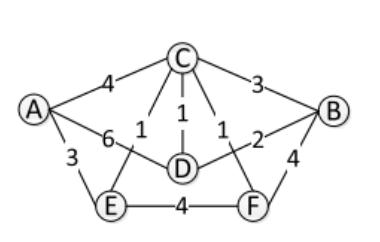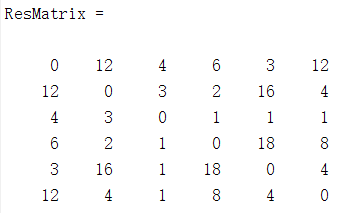1
2
3
4
5
6
7
8
9
10
11
12
13
14
15
16
17
18
19
20
21
22
23
24
25
26
27
28
29
30
31
32
33
34
35
36
37
38
39
40
41
42
43
44
45
46
47
48
49
50
51
52
53
54
55
56
57
58
59
60
61
62
63
64
65
66
67
68
69
70
71
72
73
74
75
76
77
78
79
80
81
82
83
84
85
| function [sp, spcost] = dijkstra_all(AdjMatrix, s, d)
n=size(AdjMatrix,1);
S(1:n) = 0;
dist(1:n) = inf;
prev = zeros(50,n);
count(1:n)=0;
dist(s) = 0;
while sum(S)~=n
candidate=[];
for i=1:n
if S(i)==0
candidate=[candidate dist(i)];
else
candidate=[candidate inf];
end
end
[u_index u]=min(candidate);
S(u)=1;
for i=1:n
if(dist(u)+AdjMatrix(u,u)+AdjMatrix(u,i))<dist(i)
dist(i)=dist(u)+AdjMatrix(u,u)+AdjMatrix(u,i);
prev(:,i)=prev(:,i).*0;
prev(1,i)=u;
count(i)=1;
else
if ((dist(u)+AdjMatrix(u,u)+AdjMatrix(u,i))==dist(i))&&(dist(i)~=inf)&&(u~=i)
if count(i)<49
count(i)=count(i)+1;
end
prev(count(i),i)=u;
end
end
end
end
sp=[];
stack=[];
num=[];
stack = [d,zeros(1,9)];
num=[1,zeros(1,9)];
spcost = dist(d);
while stack(1) ~= 0
if stack(1)==s
sp=[sp;stack];
stack=[stack(2:10),0];
num=[num(2:10),0];
continue;
end
tmp=prev(num(1),stack(1));
if tmp==0
stack=[stack(2:10),0];
num=[num(2:10),0];
continue;
else
num(1)=num(1)+1;
stack=[tmp,stack(1:9)];
num=[1,num(1,1:9)];
end
end
|



